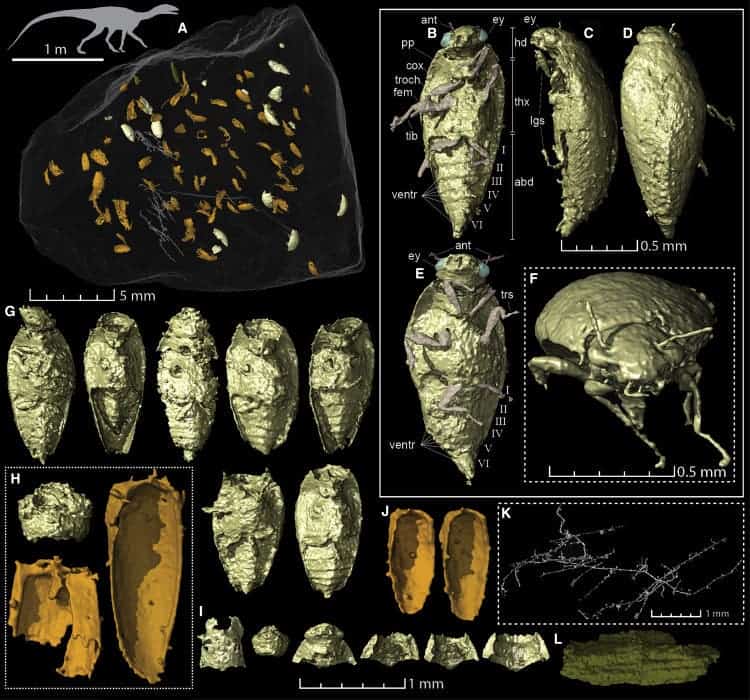Researchers at the Uppsala University have reported on an exciting find: the world’s first species identified from a piece of fossilized dinosaur poop.

The 230-million-year old insect was found in excellent condition inside a dinosaur coprolite, a piece of fossilized feces. It was christened Triamyxa coprolithica in honor of this.
In-dung beetle
Coprolites are quite common in museum collections around the world, but aren’t generally examined to see if they contain any fossils. This is due to the fact that the consensus among paleontologists is that small insects (the only animals small enough to fit inside coprolites) wouldn’t have been able to survive through the digestive tract of a dinosaur intact.
Because of this, most of our knowledge regarding insect evolution in the past comes from specimens that were trapped in amber, fossilized tree resin. The downside with this is that such specimens aren’t that common, so we can miss bits of the original picture, and they’re also not very old, geologically speaking. The oldest such fossils we’ve ever found are around 140 million years old — which isn’t that old.
For the study, Uppsala University paleontologist Martin Qvarnström and his colleagues examined coprolites from Poland that were previously dated to the Triassic period (230 million years ago). They selected a particular fragment based on its external features. It was 2 centimeters long with broken ends, and their shape suggested it was once part of a larger specimen which the team believed would make it more likely to contain insect remnants.
This fragment was then examined with X-rays inside a synchrotron, which allowed the team to rotate the coprolite in the beam in order to create a 3D model of its inside structure. There, they found excellently preserved, almost complete insect bodies measuring 1.4 millimeters in length, alongside fragments including heads, legs, and antennae.
Based on the wealth and quality of the specimens found in the coprolite, the authors were able to determine that they are a new species belonging to the group Myxophaga, small beetles that live in wet habitats and feed on algae. Although this species — coprolithica — is now extinct, four lineages in the Myxophaga group are alive to this day. This is the first time we’ve found enough fossilized material of good enough quality to “describe a new species, genus, and family,” says lead author Martin Qvarnström.
The classification was made based on characteristics like the number of abdomen segments or the position of the antennae which were compared to those of modern Myxophaga.
The coprolite was most likely dropped by a Silesaurus opolensis, a beaked dinosaur ancestor that grew to about 2.3 meters in length. It’s very likely what kept the insects in such good condition, as the material creates a microenvironment that preserves organic material such as soft tissues without flattening them, like typical fossilization processes do.
All in all, this research gives us fresh information about the evolution of beetles, as well as a glimpse into the dietary habits of certain dinosaurs and the structure of food webs during the Triassic.
For T. coprolithica itself, we still can’t know for sure how or why it went extinct while some of its relatives survived into the modern period. Many factors, which can often seem unrelated, contribute to a species surviving or dying off — so its causes are never easy to understand.
The paper “Exceptionally preserved beetles in a Triassic coprolite of putative dinosauriform origin” has been published in the journal Current Biology.


